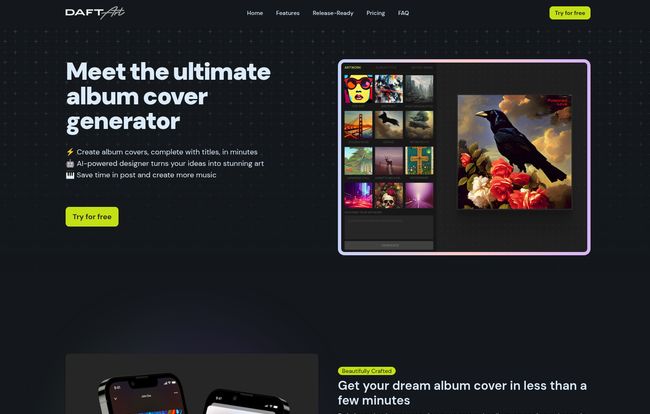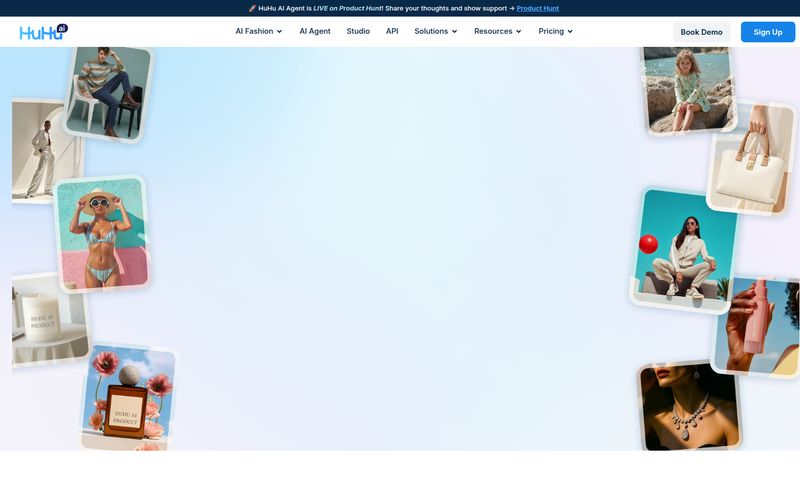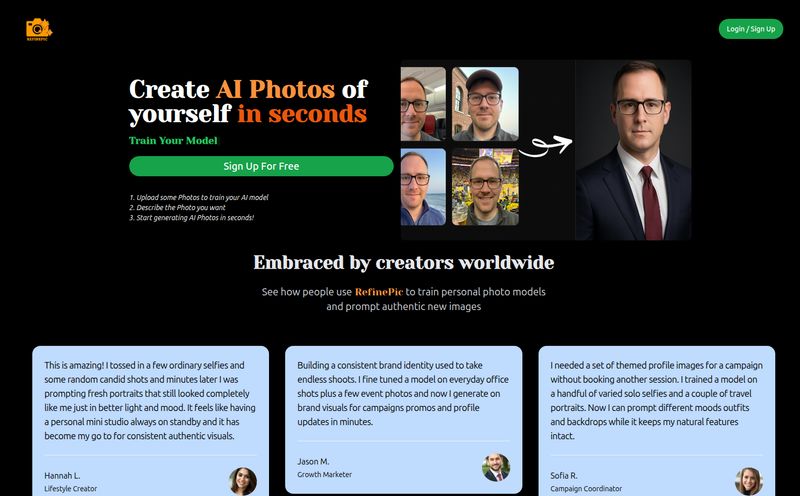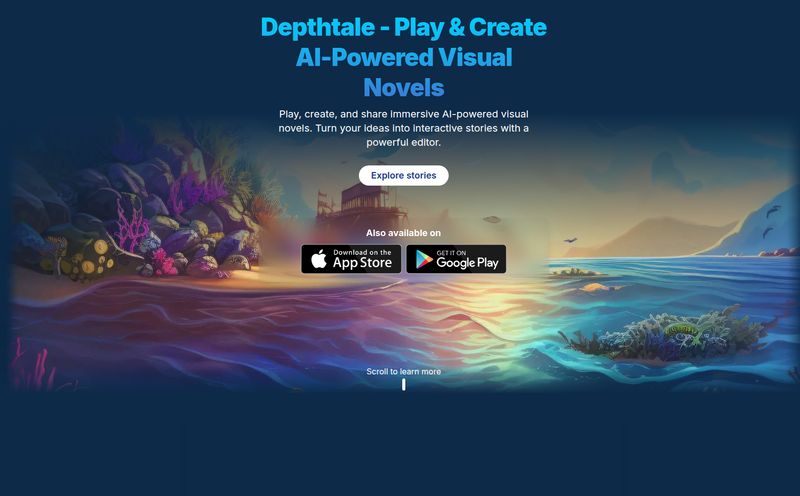If you're an indie musician, producer, or even a podcaster, you know the pain. You’ve just poured your soul into creating something amazing, your music is mixed, mastered, and ready to go. But then you hit the wall. The album art.
I have a friend who spent nearly $400 and three agonizing weeks of back-and-forth emails to get a cover for his EP, only to end up with something that looked... well, a bit like a generic stock photo. It’s a classic story. You either spend a fortune on a good graphic designer, try to learn Photoshop and tear your hair out, or settle for something that just doesn’t match the quality of your sound.
Then came the AI art wave. Midjourney, DALL-E, and the rest. Suddenly, we could generate incredible images from a few words! Problem solved, right? Not exactly. We've all seen the results. The six-fingered hands, the uncanny valley faces, the art that feels soulless and completely random. Getting something consistent and, y'know, tasteful from a raw AI prompt is a skill in itself. It's often more work than it's worth.
So when I stumbled upon Daft Art, which bills itself as the 'ultimate album cover generator', I was skeptical but intrigued. Their claim? To use AI, but with a human touch. To give you release-ready artwork in minutes. Could this be the tool that finally bridges the gap? I had to find out.
What Exactly Is Daft Art Anyway?
Daft Art isn’t just another generic AI image generator. It’s a purpose-built platform designed specifically for one thing: creating album and track covers. Think of it less like a wild, untamed AI beast and more like a creative sparring partner who already has an encyclopedic knowledge of genre aesthetics.
The core idea is simple but brilliant. Instead of starting from a completely blank slate, Daft Art provides a set of curated aesthetic filters. You choose a vibe—like Synthwave, Lo-Fi, Baroque, Japanese Chill—and then give the AI a simple text prompt. The tool then generates artwork that’s already been guided into a specific, coherent style. It’s the secret sauce that makes the whole thing work.
You get the speed and infinite possibilities of AI, but with a built-in art director to keep things from going off the rails. Pretty neat.

Visit Daft Art
First Impressions and Getting Started
The first thing I noticed logging in was how clean everything is. It's got that sleek, dark-mode feel that creators love. No clutter, no confusing menus. It gets straight to the point.
The workflow is dead simple:
- Pick an Aesthetic: You scroll through a gallery of styles. I saw everything from ‘Pop Art’ to ‘Unsettling Horror’. This is the fun part, like flipping through a record store for inspiration.
- Describe Your Vision: You type a simple prompt. Something like “a lone astronaut looking at a neon-drenched city” or “a skull surrounded by beautiful roses.”
- Generate: Hit the button and watch it cook.
- Customize: Once you have an image you love, you pop over to a simple editor to add your artist name and album title. You can change fonts, colors, and positioning.
That’s it. The whole process can literally take five minutes. It's dangerously fast.
The Good Stuff That Made Me Smile
After playing around for a while, a few features really stood out to me as being genuinely useful, not just gimmicky.
Seriously Fast and Release-Ready
This is the big one. When you download your finished cover, it comes as a high-resolution 3000x3000 pixel file. Anyone who's ever uploaded to Spotify or Apple Music knows this is the gold standard. There's no resizing, no reformatting. It's ready to go. The time savings here compared to the traditional design process are just immense.
The "Aesthetic Filters" Are a Game-Changer
I cant stress this enough. This is Daft Art’s killer feature. Raw AI is a firehose of visual information; these curated aesthetics are the nozzle that shapes it into something useful. It solves the biggest problem for non-designers: not knowing how to articulate a visual style. You don’t need to know what “subsurface scattering” or “octane render” means in your prompt. You just click ‘Angelcore’ and the AI gets the vibe.
The Simple Editor Is Just Right
I was relieved they didn’t try to build a full-blown Photoshop into the platform. The editor has exactly what you need and nothing you dont. A handful of good fonts, easy color pickers, and simple alignment tools. It's enough to make the text feel integrated with the art without overwhelming you with options. It's a classic case of 'less is more'.
A Few Things to Keep in Mind
Of course, no tool is perfect. There are a couple of trade-offs you make when using something like Daft Art.
It's Not Free, But the Model is Fair
First off, Daft Art is a premium tool. You can't just hop on and generate unlimited free covers. But what I really appreciate is their pricing structure. Instead of locking you into yet another monthly subscription you’ll forget to cancel, they use a Pass system. You buy a pass for a set number of days and can generate as many covers as you want during that time. It's a one-time payment. This feels incredibly fair, especially for an artist who just needs a cover for one single and doesn't want an ongoing commitment.
You're Guided by Their Taste
The curated aesthetics are a double-edged sword. While they are amazing for getting great results quickly, they also mean you are working within the styles that the Daft Art team has selected. If you have a hyper-specific, out-of-this-world vision that doesn’t fit into any of their categories, you might feel a bit boxed in. It's the classic trade-off: convenience for total, unrestrained control.
Daft Art Pricing Explained
The pricing is straightforward and based on how long you need access. As of writing this, here are the options available:
| Pass Type | Price | Best For |
|---|---|---|
| 7-Day Pass | $9.97 | Quick projects, like a single release or a podcast episode cover. |
| 30-Day Pass | $24.97 | Multiple releases, like an EP rollout or a month's worth of content. |
| 180-Day Pass | $99 | Prolific creators, small labels, or producers who need constant artwork. |
All plans include unlimited generation and all features. No hidden tiers or upsells. Refreshing, isn’t it?
Who is Daft Art Actually For?
After my deep dive, I have a pretty clear picture of who would get the most out of this tool.
- The Solo Indie Musician: This is a godsend. For less than the price of a pizza, you can get a professional-looking cover for your next single on Bandcamp or Spotify. It's a no-brainer.
- The Beat Producer: Churning out multiple beats a week? The longer passes could save you hundreds of hours and dollars a year on artwork for your YouTube or BeatStars page.
- The Podcaster: Need unique art for every episode to make your feed stand out? The 30-day pass is perfect for batch-creating a month of content.
- The Major Label Artist: Probably not. If you have a five-figure budget for a photoshoot and a world-renowned design team, this isn't for you. And that's okay. This tool isn’t trying to replace high-concept, bespoke human art; it's here to empower those without those resources.
Frequently Asked Questions about Daft Art
- What is Daft Art in a nutshell?
- It's an AI-powered tool specifically for creating album cover art. It uses curated styles to help musicians, producers, and podcasters generate high-quality, release-ready covers in minutes.
- Is it free to use?
- No, it’s a paid tool. It operates on a one-time payment “Pass” system (e.g., 7-day or 30-day access) rather than a recurring subscription, which is great for project-based work.
- Do I actually own the rights to the album cover I make?
- Based on the tool's entire purpose of providing release-ready art, the implicit agreement is that you have the rights to use what you create for your releases. However, I always advise checking the platform's latest Terms of Service for the specific legal details on commercial usage rights.
- How good is the image quality?
- Excellent for its purpose. It exports at 3000x3000 pixels, which meets the requirements for all major streaming and distribution platforms like Spotify, Apple Music, and DistroKid.
- Is it a monthly subscription?
- Nope! And thank goodness for that. You buy a pass for a specific duration, and that's it. No surprise charges on your credit card six months later.
- Can I upload my own fonts or images?
- Currently, it seems you work within the provided editor, which includes a selection of fonts. This is part of the streamlined experience, ensuring the text elements match the curated aesthetic.
My Final Verdict on Daft Art
So, does Daft Art live up to the hype? In my opinion, yes. Absolutely.
It’s not trying to be the be-all and end-all of digital art. It’s a practical, focused, and intelligently designed tool that solves a very real, very annoying problem for millions of creators. It takes the chaotic, unpredictable power of AI and puts a smart, user-friendly frame around it.
For the independent creator who values their time and wants to present their work professionally without breaking the bank, Daft Art is one of the best tools I’ve seen in a long time. It democratizes good design, putting the power to create a compelling visual identity right back where it belongs: in the hands of the artist.
Reference and Sources
- Daft Art Official Website
- Daft Art Pricing Page
- DistroKid Album Art Requirements - A good resource for understanding why the 3000x3000px format is important.



